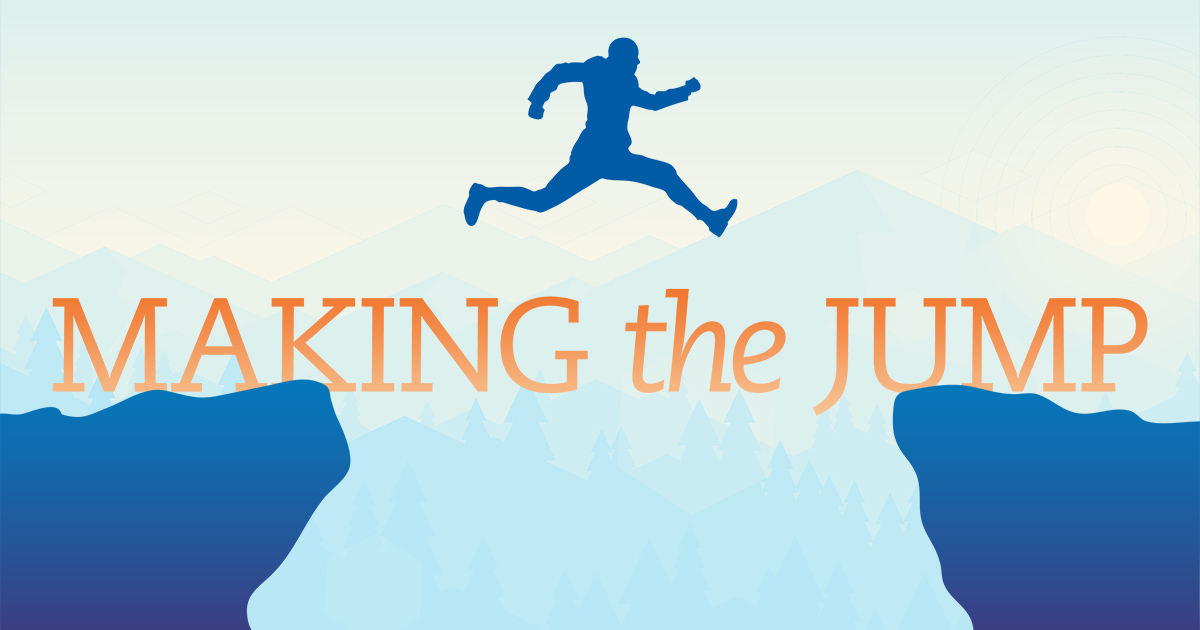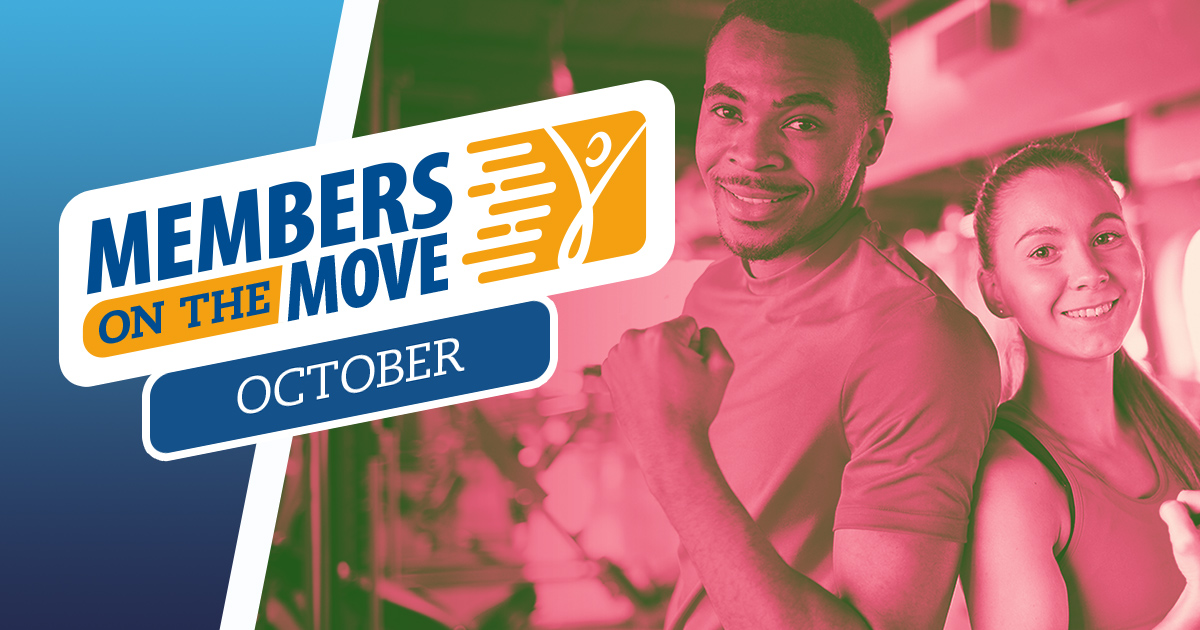In this series, I’ve hoped to share my experience transitioning from a campus recreation practitioner to a professor. In my first article of this series, “Making the jump: Tips for transitioning from practitioner to academic,” I spoke about having that “next step” feeling once I graduated with my doctorate. For this final piece, I wanted to share some final thoughts as I reflect on that transition. If you find yourself sensing that “next step” feeling and are considering this type of transition, I hope these final thoughts help you in your own journey.
Teaching experience
This first step was crucial in my development as a college instructor. I began teaching as an adjunct during my third year in the doctorate program. Only teaching one class per semester part-time helped me to develop as an instructor without being overburdened with teaching multiple courses at once. I found it beneficial to also teach a different course each semester, which allowed me to gain experience in teaching multiple courses that are often similar to other curriculums at other universities.
Laura Morris, Assistant Professor at the University of North Carolina Wilmington, also found this kind of experience essential to obtaining a teaching position. “I cannot emphasize this enough!” she says. “You will not move into a faculty role without teaching experience (or with just UNI equivalent). The more, the better! Try to get experience teaching multiple courses at different levels.”
During my time as a campus recreation practitioner, I was also invited to be a guest speaker in several academic courses, which helped to build relationships. Jill Sturts, Assistant Professor of Recreation and Leisure Studies at Virginia Wesleyan University, shares that same sentiment. “If you’re not able to teach, it’s helpful to approach current faculty members about guest speaking in their classes related to topics within your area of expertise (programming, facilities, aquatics, marketing, management, etc.),” she says. “Creating relationships with faculty is a great way to become more engaged with the academic side of recreation. It also creates opportunities for collaboration down the road related to teaching, research, and programming.” When interviewing, the more courses you can say you’ve taught as a part of that university’s curriculum, the more attractive you are as a potential member of the department.
My final thought on getting teaching experience is if you can serve as an adjunct in an academic program, evidence of teaching effectiveness is often solicited from potential employers. Cara Lucia, NIRSA President and Associate Professor at Elon University, adds, “Aspiring faculty who are teaching as an adjunct or visiting instructor should take the opportunity to invite a faculty member to evaluate their class to receive feedback about competencies in the classroom to best identify strengths and areas needing development.”
Cara also recommends observing experienced faculty in their classrooms to build on your own development. She says, “During my time as an adjunct faculty and junior faculty I found attending classes taught by faculty who have experience with engaged learning methods as well as those who taught the content well to be beneficial in my own development as a faculty member.”
Establish your research agenda
Although teaching is a large part of any tenure-track faculty position, scholarly activity is just as important—if not more so. Once I finished the program, I immediately started to think about the publications that my dissertation would yield. This was the first step in developing my research agenda. By looking at the themes of my dissertation, I was able to produce two to three publications, which would hopefully lead to future research. The biggest challenge here is making each manuscript sound more like a publication rather than a dissertation…and not plagiarize yourself. This is harder than you would think!
Being honest, that is as far as I got after I graduated. I needed some time to recoup from four years of nonstop academic reading and writing. However, not publishing until after beginning my position at Lehman College worked out well since anything I published after starting there counted toward tenure. You should still start developing your manuscripts early though, because it often takes ten to fifteen months for a piece to finally be published. Getting a jump on your manuscripts is also important because the first year of your tenure-track position will probably be spent applying for grants and scholarships along with collecting preliminary data for future research. It would be good to have something close to ready to submit for publication.
Once you’re through your manuscripts from your dissertation, it’s good to continue along those lines of research while also establishing new ones. Being able to demonstrate a solid research agenda is essential in the application and interview process as you prepare to apply for academic positions.
Jill Sturts makes several recommendations in this area. “Get familiar with the literature and body of knowledge within your specified area of interest,” she says. “Get comfortable with seminal pieces of literature as well as some of the most current research. Identifying what is ‘missing’ is also important!” Lastly, establishing relationships that can both lead to adjunct teaching positions and future research is essential. Laura Morris adds, “Build relationships/network with faculty and researchers on your campus. You have to build these relationships to get an opportunity to adjunct. These individuals can also help establish your research agenda.”
Apply, apply, apply
I spent my final year of the doctoral program and the year after graduating keeping an eye out for potential faculty positions—and I even had a few interviews. This eventually led to my current role. This process can be daunting. Researching the position and the university is vital to finding the best fit for you. Each university can vary based on the program you would be teaching in and the expectations for tenure. Heather Sanderson, Assistant Professor at Meredith College, found that setting research expectations was also important. “Researching the type of institution you are applying to (R1 vs liberal arts), and also if their T&P process is shared online will let you know what is expected for tenure,” she explains. “When I was at NC State, I was told I would be required to publish six articles and generate a minimum of $100K in grants annually, versus at Meredith where one article or professional presentation was required annually with a strong focus on teaching and service. The number of years for tenure and if there is a mid-tenure review is also important to understand.” Jill Sturts adds, “Keeping an eye on open faculty jobs may also help inform what kind of position you would like to have (teaching vs. research, etc.). The more positions you apply for, and even the more interviews you have, really helps clarify where you will fit best.”
I did find the interview process to be similar. Some interviews were one full day while others were two days. They still consisted of meeting with various individuals and groups. My flights, hotels, and meals were still paid for. However, they all consisted of a teaching demonstration and a research presentation. My experience as an adjunct professor teaching multiple courses of various topics benefited me here, and my research agenda was fresh enough in my mind that I could connect it with initiatives in place at the respective universities.
It’s important to be as engaging as possible in the classroom for your teaching demonstration. You want students participating, laughing, and enjoying whatever topic you’re teaching. Oh, and you will also usually have departmental faculty watching too!
The first year
Once I began my position at Lehman College, I started putting together my research agenda, preparing grant applications, presentation proposals, and of course, manuscripts from my dissertation. It was also helpful to remain in touch with various individuals I considered my mentors, and to also find mentors within my college. It was important for me to find opportunities to get myself established within the university community.
The experience as a faculty member is what you make of it. There are always various workshops, conferences, grants, scholarships, awards, and other opportunities. However, in many cases, you have to seek them out. For example, I was awarded a research grant my first year and I was also awarded a travel grant that funded both a writing retreat and a national conference that I participated in. During my first year, it was also very important for me to become involved on campus by attending union meetings, faculty senate meetings, first-year faculty orientations, and general faculty meetings.
I found that faculty do tend to have a bit more freedom, both with schedules and academic activity. The work is much more self-directed with individually-imposed deadlines. Yes, before COVID-19, I was on campus quite a bit, but not necessarily the traditional Monday through Friday 8:00am to 5:00pm schedule. Even then, a good deal of work was done from home. As a nine-month contracted faculty member, summers are quite different. Unless I’m teaching a summer course or doing any advising, I find myself often on my own schedule. Summers are not a vacation—pretty far from it. Summers for many academics are often when a bulk of the writing will be happening. So self-motivation is crucial.
Conclusion
Writing this series of articles for my NIRSA colleagues has been both beneficial and therapeutic. I hope that it has been helpful for some of you in similar situations. Reflecting on my experience has helped me see things I wish I had done differently or that I wish I’d better prepared myself for.
Fortunately, I’ve also been reminded of areas where I have been successful. I suppose this is something every academic can relate to—ups and downs, strikes and gutters. That’s just how it goes. Sometimes we get the job and sometimes we don’t. Sometimes you get the grant you applied for, or you get your manuscript accepted, and sometimes you don’t.
But you cannot get down on yourself. There will be many successes and failures, but it’s important to learn, adjust, and try again. So, for anyone currently thinking about making this type of transition, I hope this series was as rewarding for you as it was for me.
Acknowledgements
I would like to think my contributors in this series: Cara Lucia, Heather Sanderson, Jill Sturts, and Laura Morris. Your thoughts and advice have been incredibly insightful. I have learned so much from all of you throughout my career, and I look forward to many more collaborations!
- For more information, contact Dr. Jacob Eubank, EdD, Assistant Professor – Recreation Education & Therapy at Lehman College CUNY by email at jacob.eubank@lehman.cuny.edu.
- If you are interested in highlighting your campus or a NIRSA member’s achievements on your campus, pitch us your ideas.
Dr. Jacob Eubank, EdD is currently Assistant Professor - Recreation Education & Therapy at Lehman College of City University of New York (CUNY). You can email him at jacob.eubank@lehman.cuny.edu.







